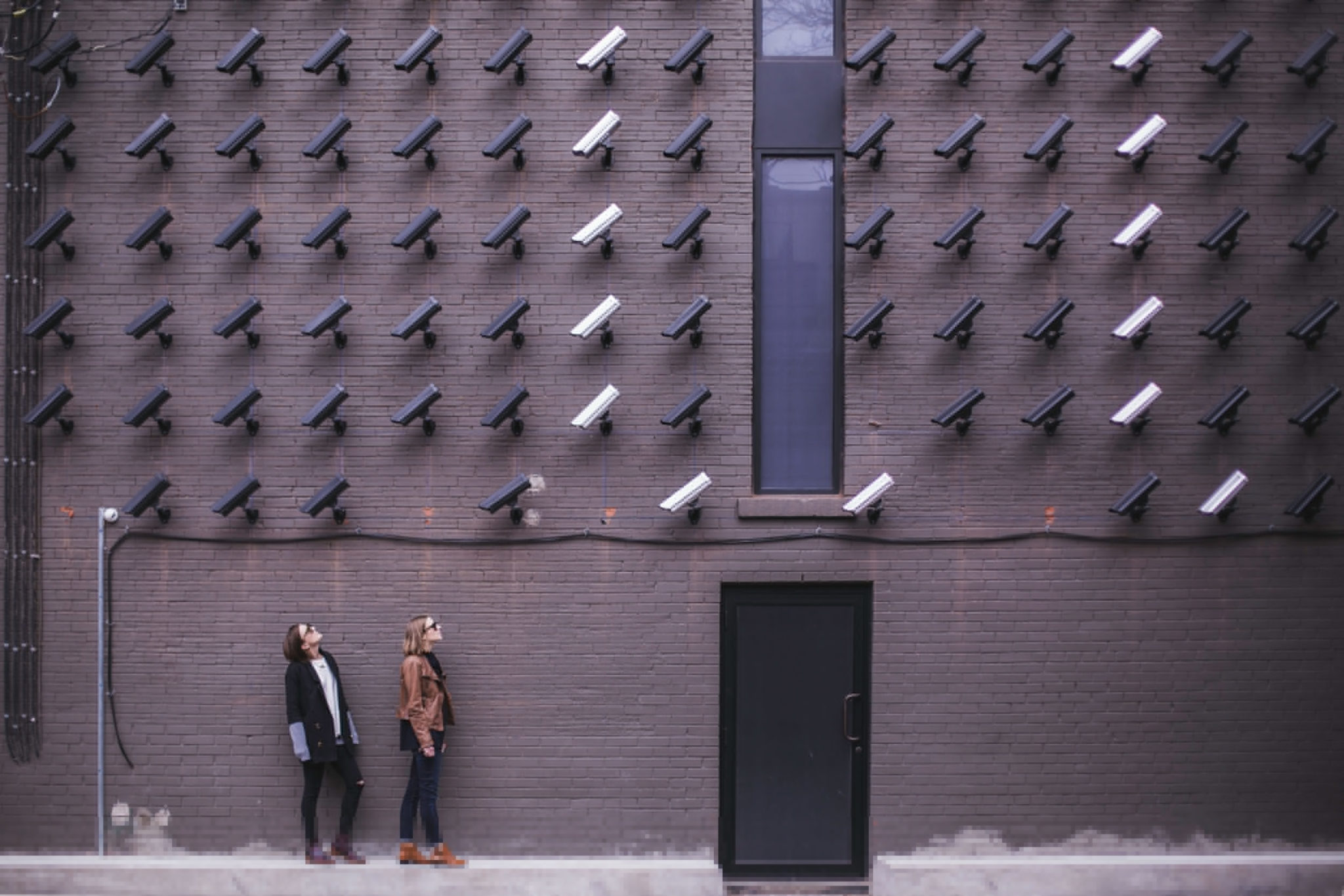A truism in Silicon Valley is that you must never confuse a clear view with a short distance -- yet I still do, far too often.
I'm thinking, today, of cameras. I laid out a clear view in a book seven years ago of how the ubiquity of cameras would, among other things, rein in police officers. But the distance certainly hasn't been short. We're just now seeing, based on footage from officers' body cams and from bystanders, the beginnings of the sort of effects I thought would come quickly.
Therein lies a lesson, I think, not just for how slow technology adoption can be but also for the sorts of implications that having cameras everywhere will cause for insurers.
When Chunka Mui and I published "The New Killer Apps: How Large Companies Can Out-Innovate Start-Ups," in 2013, we said cameras were among six technologies that created the potential for a "perfect storm of innovation." (The others were mobile devices, social media, sensors, the cloud and what is generally referred to as big data, though we call it "emergent knowledge.") We said that, while it was surprising that someone had a camera available to film the Los Angeles police beating Rodney King in 1991, cameras would soon be wildly abundant as they shrank from the size of a brick to a dot on the back of a smartphone or other device and as the cost disappeared along with the bulk. So, filming of any abuses should become the rule, not the exception.
We assumed that police would become more careful. But many police departments moved slowly on outfitting officers with body cams and dashboard cams. Then some officers didn't turn their cameras on. Even when there was footage, some police departments tried to hide it (as Chicago did for more than a year following the 2014 death of teenager Laquon McDonald, shot 16 times after walking away from a police officer). Some acted as though there wasn't ample video from bystanders (the approach the Minneapolis police department took in its initial report on George Floyd, even though he was killed in broad daylight in the middle of a crowd). Only now, after a rash of killings of blacks by white officers, on camera, does there seem to be a recognition that cameras are everywhere, that footage will quickly become public and that officers and departments will be held to account for any abuses. And it remains to be seen how much the proliferation of cameras will change police behavior in the long run.
Based on how cameras have played out in police work, I have a clear view of what will happen with insurance as they shrink, decline in cost even further and show up everywhere -- but also a little more humility about claiming to know how short the distance will be.
We're already seeing cameras show up in security systems through doorbells such as Ring, and that opportunity should continue to develop. In addition, I see two major trends developing for insurers from tiny, ubiquitous cameras: 1) There can be a permanent record of just about anything (not merely interactions involving police), and 2) almost all inspections can have a do-it-yourself component -- with the client walking around, using his or her cameraphone at the direction of an insurance professional on the other end of the call.
I'd love to say that I came up with the idea about a permanent record, but it actually traces back to a project that the great Gordon Bell did for a book, "Total Recall," that he published in 2009. Gordon, who developed the first minicomputer and has numbered among computing's visionaries for six decades, had begun digitizing his life in 1998. He scanned all his letters, photos and memorabilia and captured everything he did on his computer. He layered on other capabilities, including an armband that tracked his vital signs and a camera recorder that took regular snapshots of what was in front of him and recorded everything he said.
While his sort of approach raises enormous issues related to the privacy of those he interacted with, the fact is that the technological capability will be there, and everyone, including insurers, will increasingly need to be prepared. Lots of good could come. Disputes about who said or did what when could mostly go away -- you just consult the video. Questions about the maintenance of a building or whether a floor was wet before someone fell might likewise just be a couple of clicks away from being settled. All sorts of fraudulent schemes would be easier to catch. But those privacy issues will be nasty, and loads of other complexities will surely arise.
Cameras will also speed inspection processes and take out a chunk of cost. A homeowner won't have to schedule an inspection with an insurer, wait a week for the inspector to arrive and arrange to stay home for a morning to show the inspector around. The homeowner will just walk around the house and video everything, guided by some combination of an AI and a person -- asking, perhaps, for the homeowner to zoom in on potential damage or on belongings that might be especially valuable. (I'm assuming a drone has already flown around the house to get the exact dimensions and inspect the yard.) The insurer would wind up with an exact record of what was in the house and could thus price more precisely, rather than just assuming that belongings amounted to some percentage of the total value of the house. The insurer could also easily request occasional mini-inspections, to stay current on the home's condition and on belongings.
The possibilities of improved security, permanent records and DIY inspections are just the beginning. Cameras cost next to nothing and don't even have to be connected to anything to be able to transmit pictures to you -- just include a Wi-Fi or cellular antenna in the chip that controls the camera and attach a tiny solar cell and battery, and you can put a camera anywhere. (Again, within privacy constraints. I am most decidedly against anything devious; I'm just sketching the technical possibilities.)
You don't need to stay earthbound, either. Toaster-sized satellites are now blanketing the Earth, creating ways to capture just about any image from above that you might like. Want to see how the roof on a house is faring? Done. Want to check on the financial health of a business you're considering insuring? Just use satellite images to count the cars in the parking lot at various times of the day. Want to keep an eye out for erosion that might put a property at risk? No sweat.
Again, with cameras, cameras and cameras come privacy, privacy and privacy issues. But the view is clear: The world will be blanketed with cameras, and they'll change the dynamics for many aspects of insurance. It's not at all clear, at least to me, how short the distance to those changes will be, but it never hurts to start thinking about the possibilities now.
Stay safe.
Paul
P.S. A personal note that makes me wonder how long we will be dealing with the health issues caused by the coronavirus:
A longtime colleague from the Wall Street Journal, Rich Regis, died this past week at age 67 of complications from illnesses he contracted when the World Trade Center towers collapsed on 9/11. Yes, going on 19 years ago.
It was clear quickly that Rich had been stricken by the toxic cloud that enveloped the WSJ offices, which were diagonally across the street from the South Tower. As his wife testified before a Senate committee in 2007, "Within 3 weeks... [Rich] succumbed to an autoimmune attack, which... led to kidney failure, shock liver, bowel perforations, sepsis and life support.... Doctors opened him up twice, vacuumed him out, replaced his blood, dialyzed his kidneys and re-sectioned his intestines three times."
Rich not only made it back to the WSJ but, before retiring four years ago after 35 years at the paper, cemented his status as a behind-the-scenes legend -- erudite and a pro's pro as an editor but capable of a remarkable variety of profanity, kind but commanding, easy-going but get the hell out of his way as deadline approached. "A gruff mensch," one colleague called him. The WSJ editor-in-chief lionized Rich in a memo Monday that described him as "the sort of character that many of us went into journalism to meet." RIP, Rich.
As a longtime observer of technology, I'm familiar with the concept of the "long tail" -- those Earthlink customers who still have dial-up internet connections decades after the rest of us moved on. As a devotee of the Civil War, I know that Joshua Chamberlain (hero of Little Round Top in the Battle of Gettysburg) became the last casualty of the war when he died in 1914 -- of a wound he suffered 50 years earlier. As a student of insurance, I'm well aware of the tens of billions of dollars that were paid in claims related to asbestos installed decades earlier. But I really thought we were about done with 9/11 deaths.
Now I wonder how long COVID-19 will be with us, given that so many of those who have officially recovered and been discharged from the hospital suffer from myriad, mysterious, debilitating problems.
P.P.S. Here are the six articles I'd like to highlight from the past week:
A Quarantine Dispatch on the Insurtech Trio
Let’s be frank. Of Lemonade, Root and Metromile, only the latest figures from Root show the trajectory expected for a startup in growth phase.
Step 1 to Your After-COVID Future
Even before implementing return-to-office plans, get clear on your brand’s purpose. Why you exist. Why you matter to the world.
4 Stages to Recovery and ‘Future of Work’
COVID-19 has shown how fast disruption can occur -- but also that people can adapt quickly and overcome global business challenges.
Should Insurers Use Amazon Model?
The short answer is: No. Insurance is very different from the business of Amazon (and Netflix) and must be approached differently.
The greatest threat may be auto insurers’ continued 100-plus-year-old view of auto insurance as a policy transaction.
7 Biases Customers Have About Risks
To provide insurance services based on consumers' needs, we should pause and try to understand deeply how they measure risks.








